by Martin Green
One of the true pleasures of being a watch journalist for me is the ability to try out watches before they even hit the market. This joy increases when the watch in question is of a rare breed like the Habring2 Perpetual-Doppel, an extraordinary combination of perpetual calendar and split-seconds chronograph.
Habring2 unites these two complications in one timepiece in celebration of the independent watch brand’s fifteenth anniversary.

Habring2’s Perpetual-Doppel, a perpetual calendar with split-seconds chronograph
Split-seconds chronographs: familiar territory for the Habrings
Richard Habring, one half of the passionate husband-and-wife team behind Habring2, is quite familiar with the split-seconds chronograph complication; he wrote a whole chapter in its history in 1992 when he was still with IWC by developing a rattrapante system that relied on cams instead of the more complex column wheels used until then.
IWC patented it, using it in a variety of watches such as the automatic Pilot Doppelchronograph of 1992 and the manual-wind Portugieser Rattrapante Chronograph.
It is also interesting to note that IWC decided to celebrate an anniversary with a split-seconds perpetual calendar: upon the tenth anniversary of the Da Vinci line in 1995, IWC gave this watch its tenth hand by replacing the regular chronograph with the rattrapante system developed by Habring.
As IWC’s patent expired a few years ago, Habring may now use this construction for his eponymous brand.
The Habrings had in fact already used it with the Doppel-Felix, which boasts signature Habring2 style, in particular expressed by the chronograph buttons toward the top of the case at 10 and 2 o’clock.
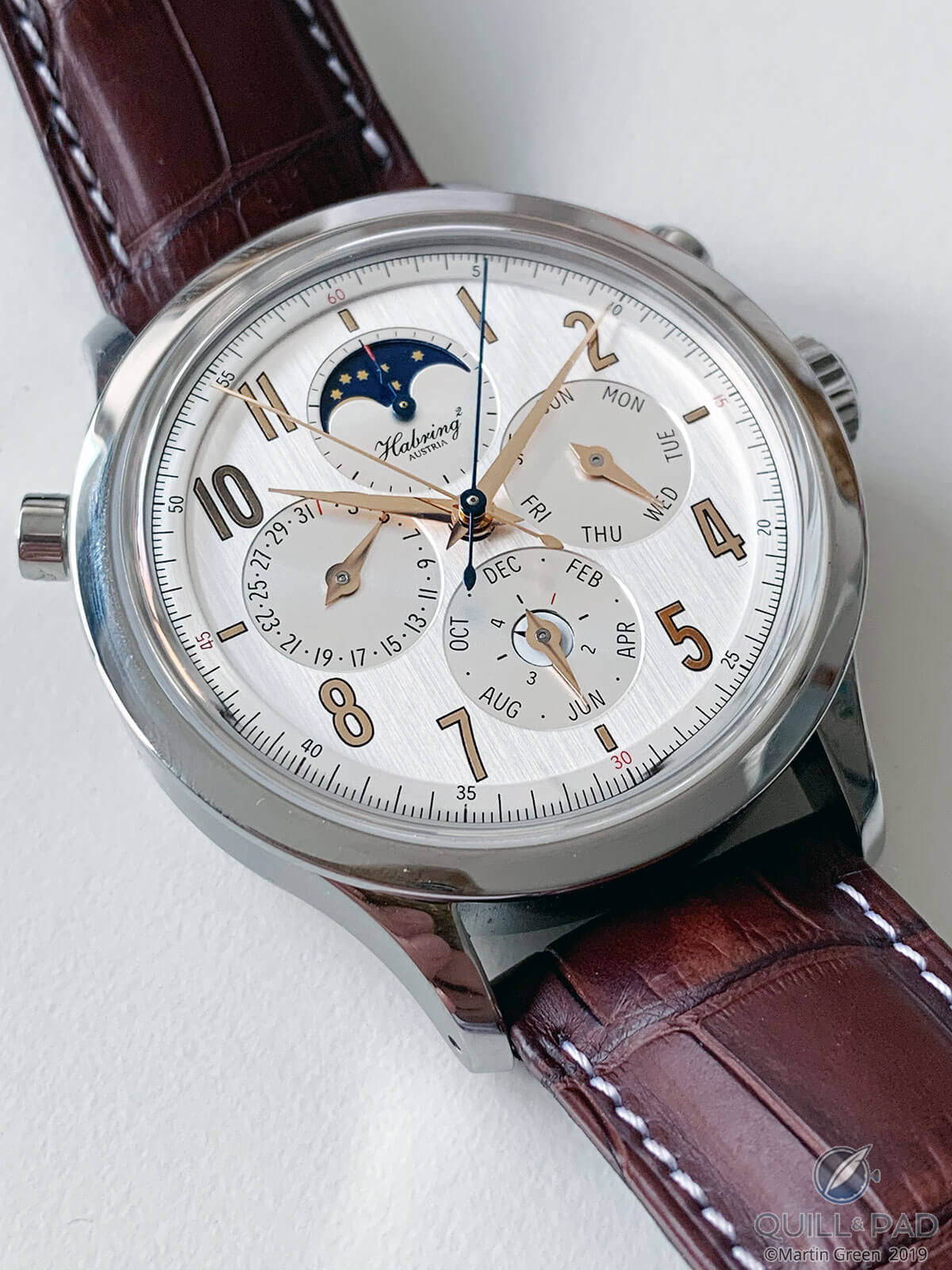
Habring2’s Perpetual-Doppel, a perpetual calendar with split-seconds chronograph
The Perpetual-Doppel is an extension of sorts, but with a perpetual calendar module sourced from Dubois Dépraz added to the movement.
A pity that the Habrings didn’t make that themselves, you ask? Not really, I answer, as the Habrings already make the base movement in their Austrian manufacture, and the production of a perpetual calendar movement or module would not justify the investment for this small-scale independent.
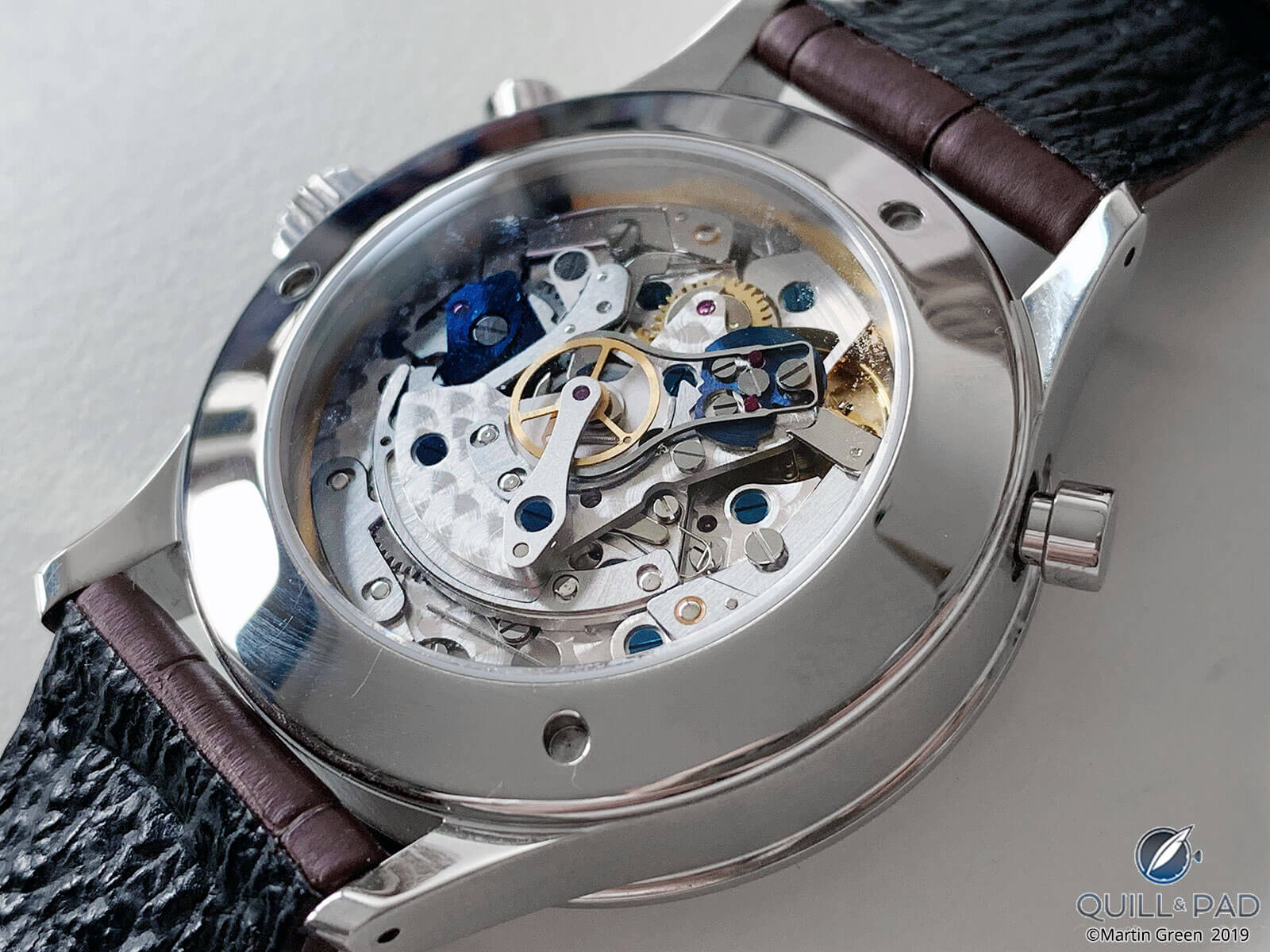
The attractive movement of Habring2’s Perpetual-Doppel, a perpetual calendar with split-seconds chronograph
An in-house perpetual movement would also be going against the ethos that constitutes a significant part of the success that Richard and Maria Habring have enjoyed: that they want their watches to be precise, reliable. and relatively affordable.
So there is a focus during development and production on creating robust movements that can handle everyday life with grace, elegance, and without causing undue worry. The Dubois Dépraz module provides that in conjunction with the in-house rattrapante complication, a typical Habring2 specialty.
Habring2 Perpetual-Doppel: a labor of love
The Perpetual-Doppel is a labor of love, clearly visible in the details. As are all Habring2 watches.
But the Habring2 Perpetual-Doppel will also require a bit of love and attention from its owner: where most modern perpetual calendars are powered by an automatic movement (and stay wound while rotating on a winder), the Perpetual-Doppel is manually wound.
This comes with advantages and disadvantages. To start with the latter, while the Perpetual-Doppel’s calendar functions can be set and adjusted using the correctors on the side of the case, this requires some finesse.
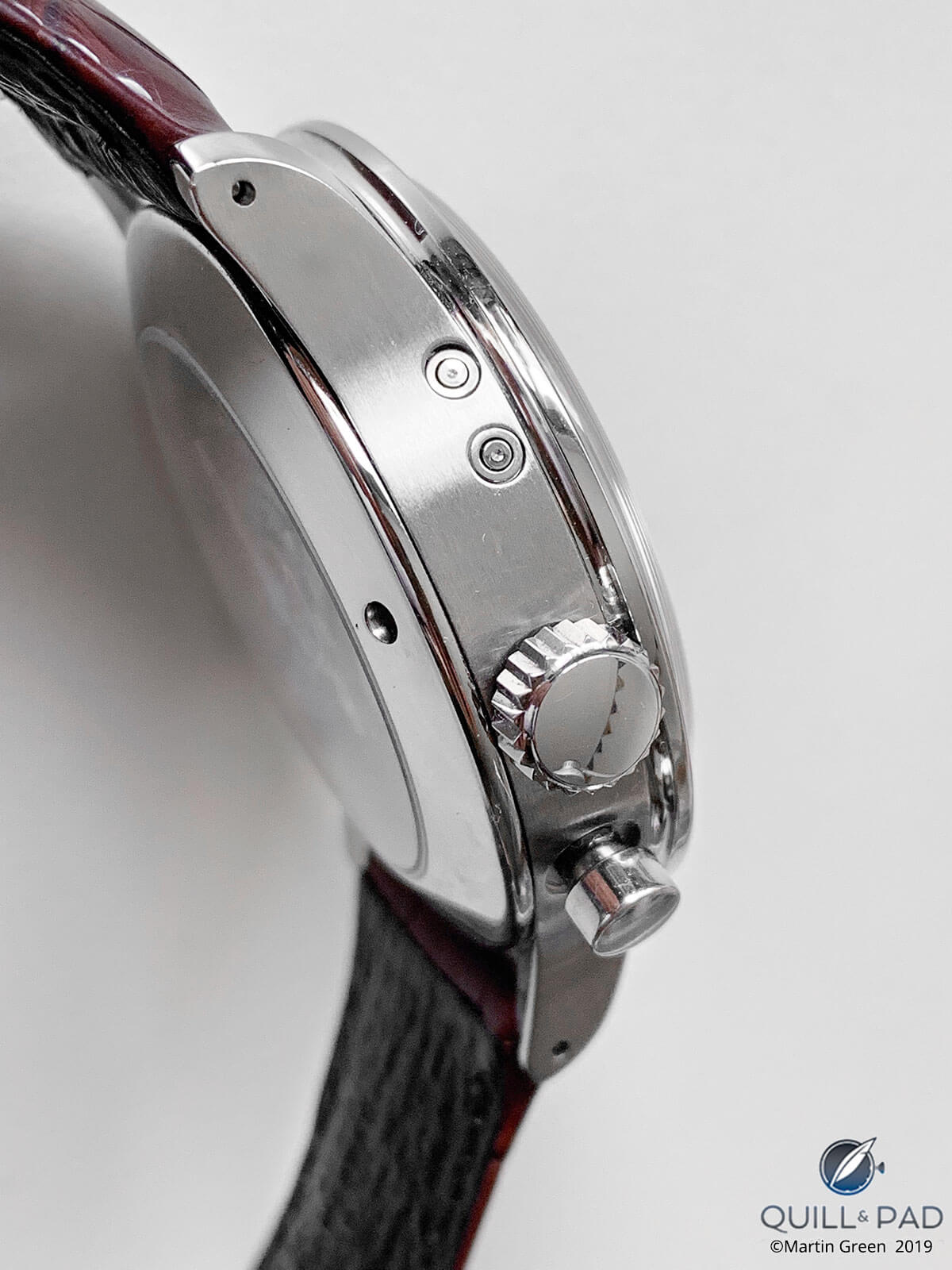
The perpetual calendar correctors, crown, and chronograph pusher on Habring2’s Perpetual-Doppel
When off the wrist, unless worn daily, automatic perpetual calendars are usually stored on a winder. With the Perpetual-Doppel you have the choice of winding it every two days (I can think of far worse “chores”) or setting the calendar by hand when you start wearing it after a couple of days off the wrist.
For some, this might be a deal breaker, but there is also an upside: because the watch lacks a rotor, the movement – and especially the parts that support the rattrapante function – are in full view, and quite frankly it is very gratifying to see them in action.
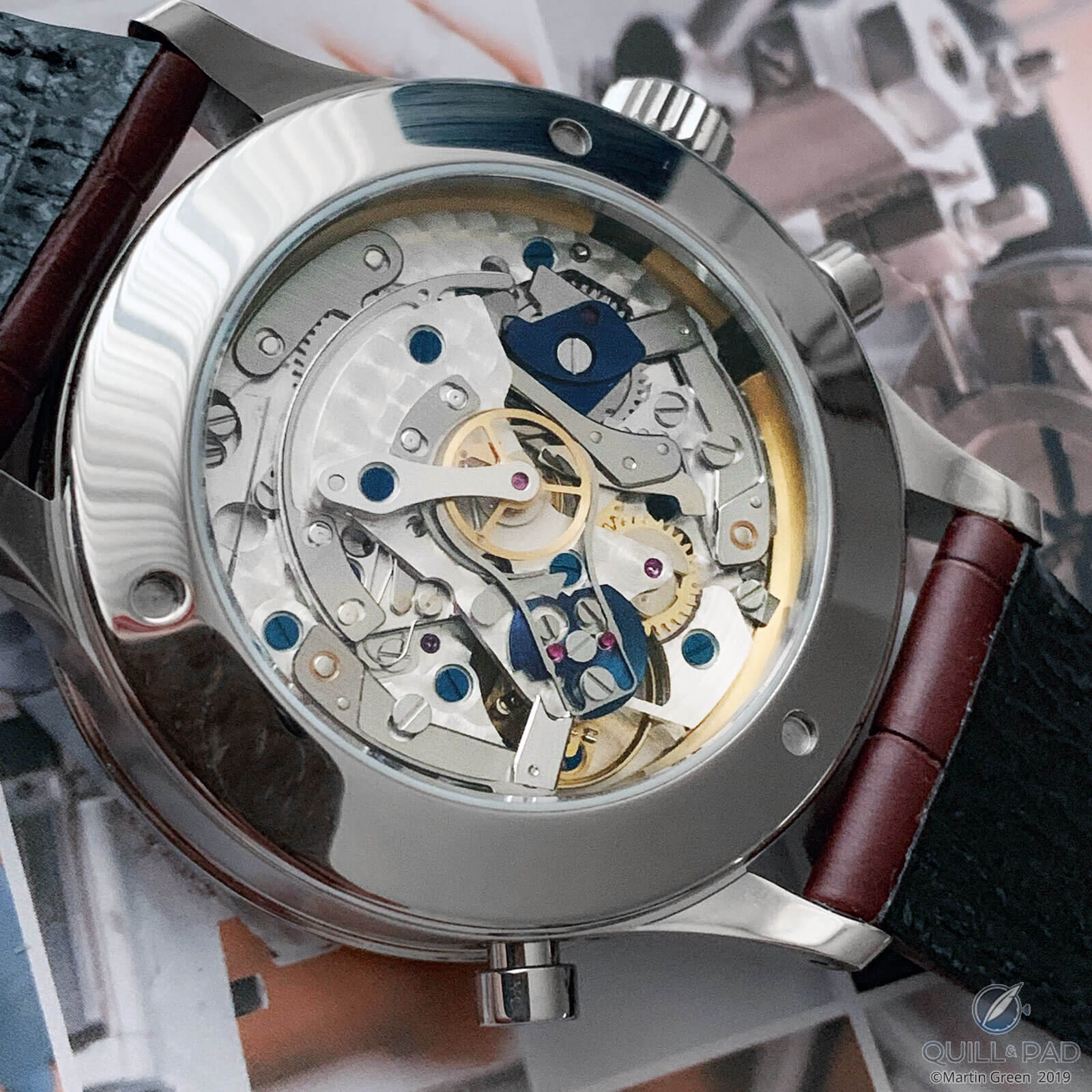
View through the display back of Habring2’s Perpetual-Doppel, a perpetual calendar with split-seconds chronograph
The finishing of the movement is what you would expect from a small manufacture, with a few blued parts cleverly drawing the eye’s immediate attention to the split-seconds chronograph complication.
At 43 mm is the case quite large, but doesn’t feel overly so. Again it is Richard and Maria Habring’s attention to detail that makes the difference.
While the design of the case is rather sober and straightforward, its wearing comfort is impressive. The lugs are kept relatively short and angled downward, which plays an important role in achieving this.
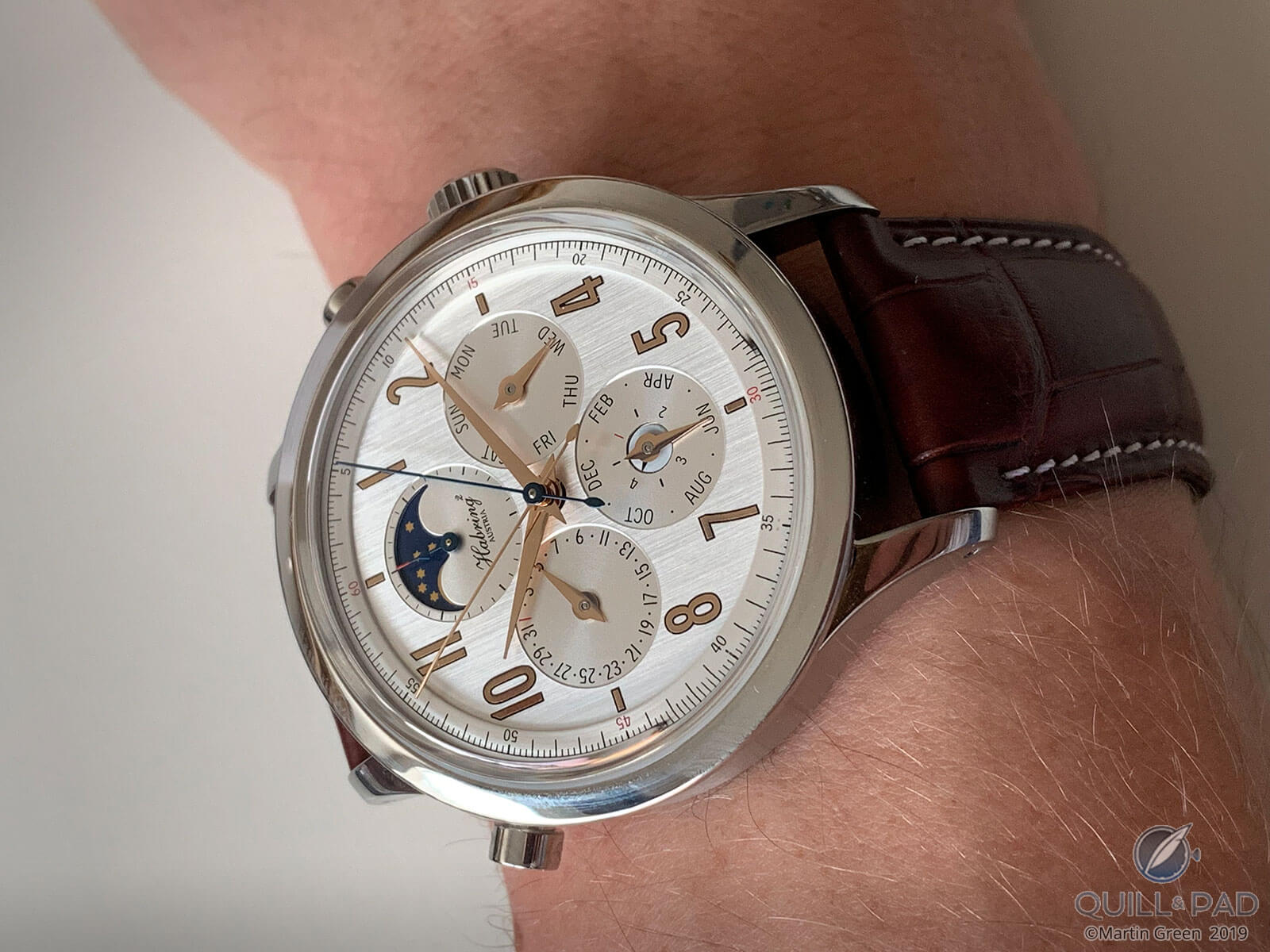
Habring2’s Perpetual-Doppel, a perpetual calendar with split-seconds chronograph
While I would qualify the case as functional and suitable, the box sapphire crystal gives it kind of a vintage appeal but also keeps it in line with the rest of the Habring2 collection.
The power of Habring2’s watches lies in their understatement; they are a delicacy for connoisseurs of fine watches, those beyond the point of “showing off.”
The face of the Habring2 Perpetual-Doppel
The case and the sapphire crystal also set the stage for what I consider the main attraction of this watch: the dial.
Habring2 opted for a classic calendar layout with four subdials, which is also what the Dubois Dépraz module supports, but keeps it clean and takes full advantage of the Perpetual-Doppel’s larger case size.
Legibility is superb, and so is the play of light. The subdials are recessed slightly into the dial, while the railroad track around the perimeter is slightly raised. In different light conditions, the subdials sometimes take on a completely different hue than the rest of the dial.

A close look at the dial of Habring2’s Perpetual-Doppel, a perpetual calendar with split-seconds chronograph
Combined with the blue and gold-tone hands and characteristic numerals, this results in a watch that is very attractive, thought through on a very detailed level.
Next to the silver dial I had the pleasure of wearing for a while, Habring2 also offers the Perpetual-Doppel with silver subdials and either a copper/salmon or blue dial.
A perpetual calendar combined with a split-seconds chronograph usually results in a potent-sports-car price tag. Here Habring2 goes its own way as well: while the split-seconds chronograph base movement is made in house and the perpetual calendar module is sourced from a leading supplier, the owner is only charged €21,500 for the Perpetual-Doppel.
This price is excellent value for a timepiece of this caliber (no pun intended), especially considering how limited its production is and that it contains a perpetual calendar with split-seconds chronograph.
Habring2 did not cut any corners here – although I wouldn’t be surprised if the duo’s breakfast consists of bread with jam instead of smoked salmon with a dollop of caviar.
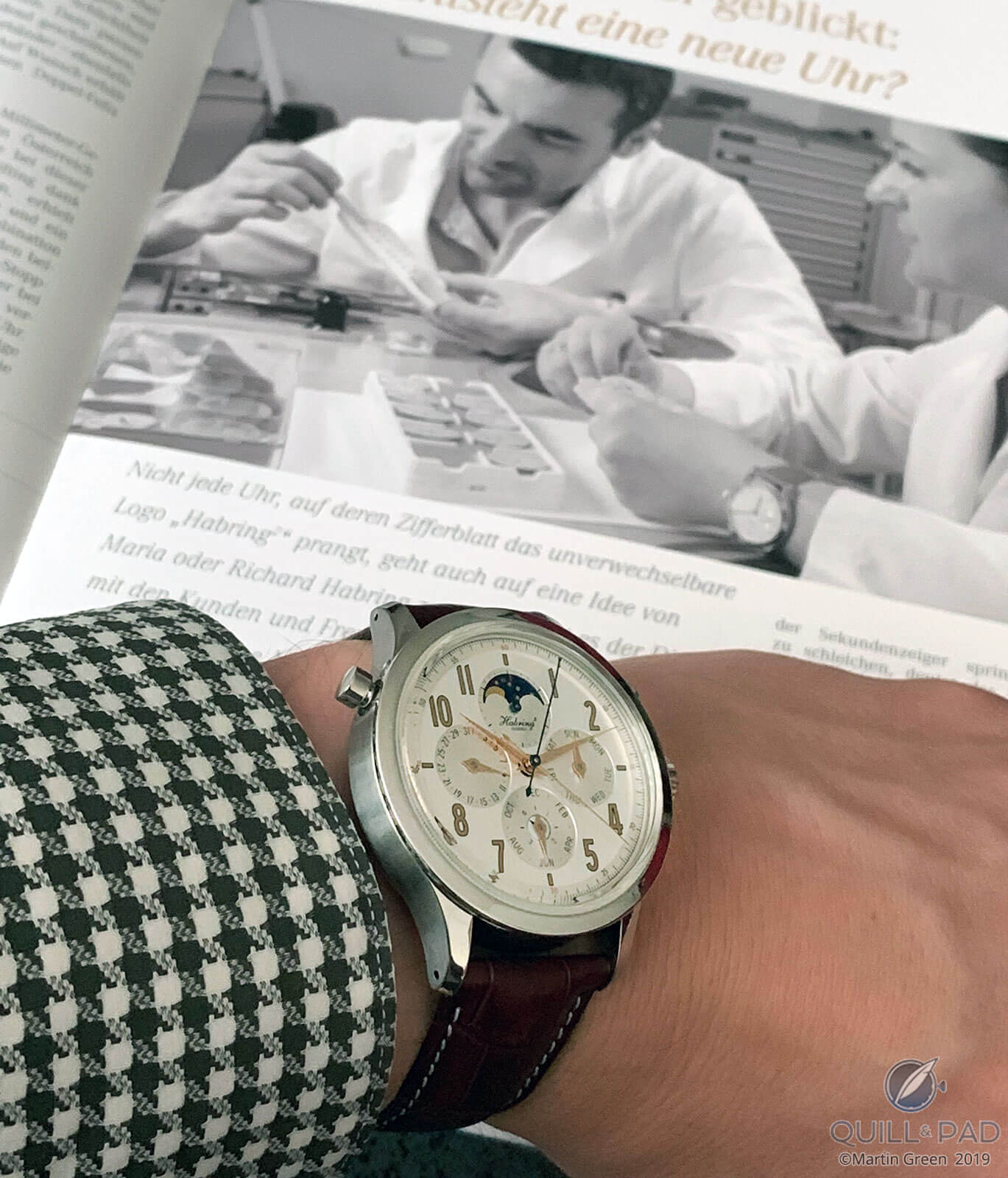
Habring2 Perpetual-Doppel on the wrist
The Perpetual-Doppel is a classic beauty with a stunning dial and unusually positioned chronograph pushers adding an individual touch.
Brands like Habring2 and watches like the Perpetual-Doppel add some spice to the generally safe offerings of many mainstream brands.
To have a healthy industry, we need both. And I am for sure looking forward to what Habring2 will bring out in its next 15 years.
For more please visit www.habring2.com/en/collection/perpetual-doppel.
Quick Facts Habring2 Perpetual-Doppel
Case: 43 x 12 mm, Austrian stainless steel
Movement: manually wound Habring2 A11P in-house base caliber with Dubois Dépraz perpetual calendar module, 4 Hz/28,800 vph frequency, 48-hour power reserve
Functions: hours, minutes; monopusher split-seconds chronograph; perpetual calendar with day, date, month, leap year, moon phase
Price: €21,500
You may also enjoy:
Habring2 Gets Happy (And Serious) With Felix, Featuring First Austrian Movement
In Praise Of Habring2: A Collector’s View
Beautiful Watches Made In Austria: Habring2’s Felix, Doppel-Felix, And – Now – Chrono-Felix
Leave a Reply
Want to join the discussion?Feel free to contribute!





















































Thanks for the review.
12 mm hight of the case sounds extremely thin for these complications – does it include the crystal, or is it just the hight of the case itself? In that case, how much is the total hight including the crystall?